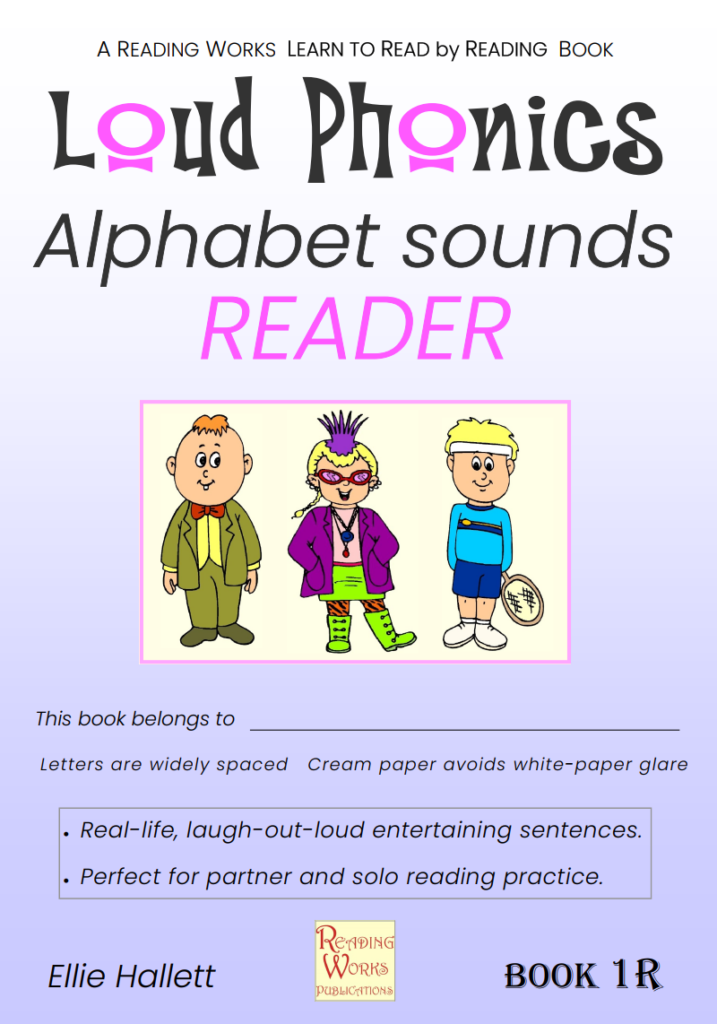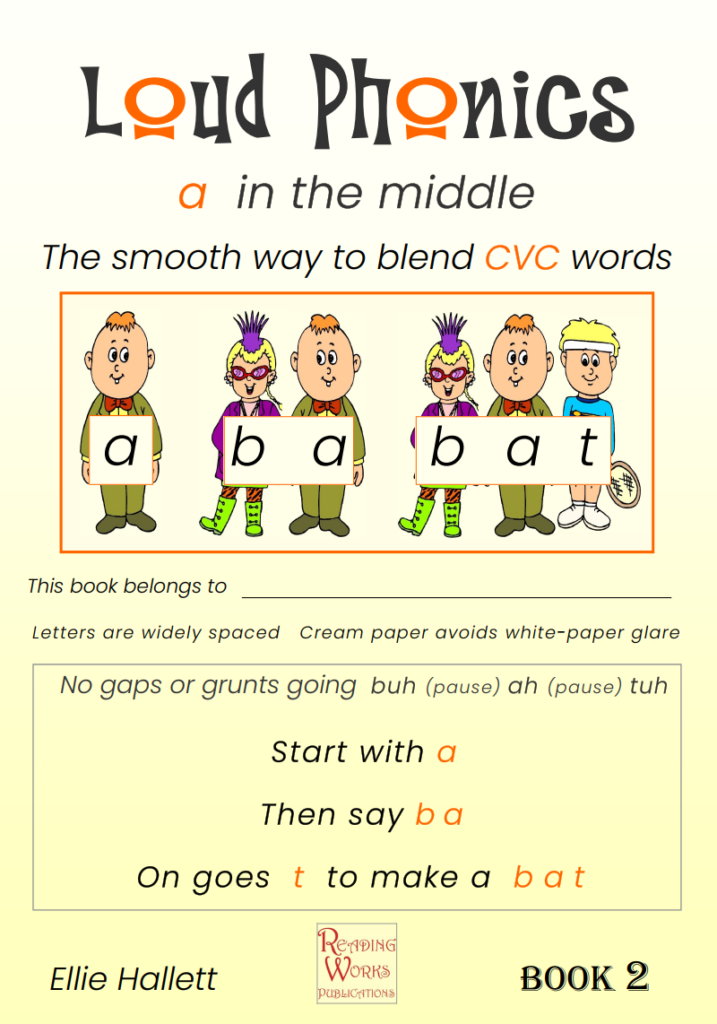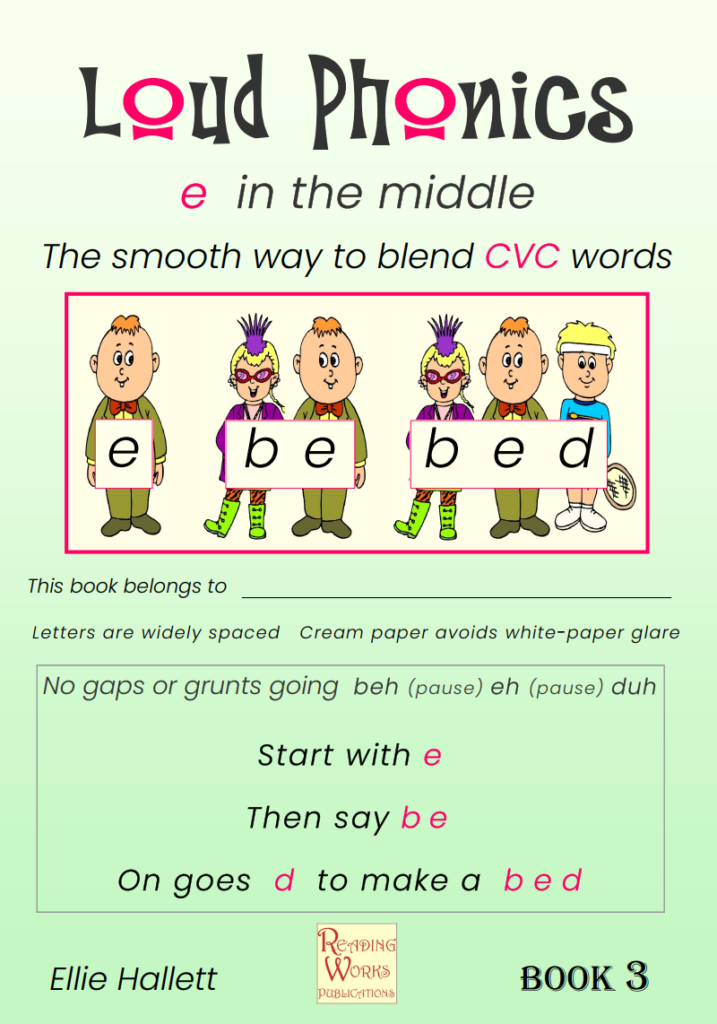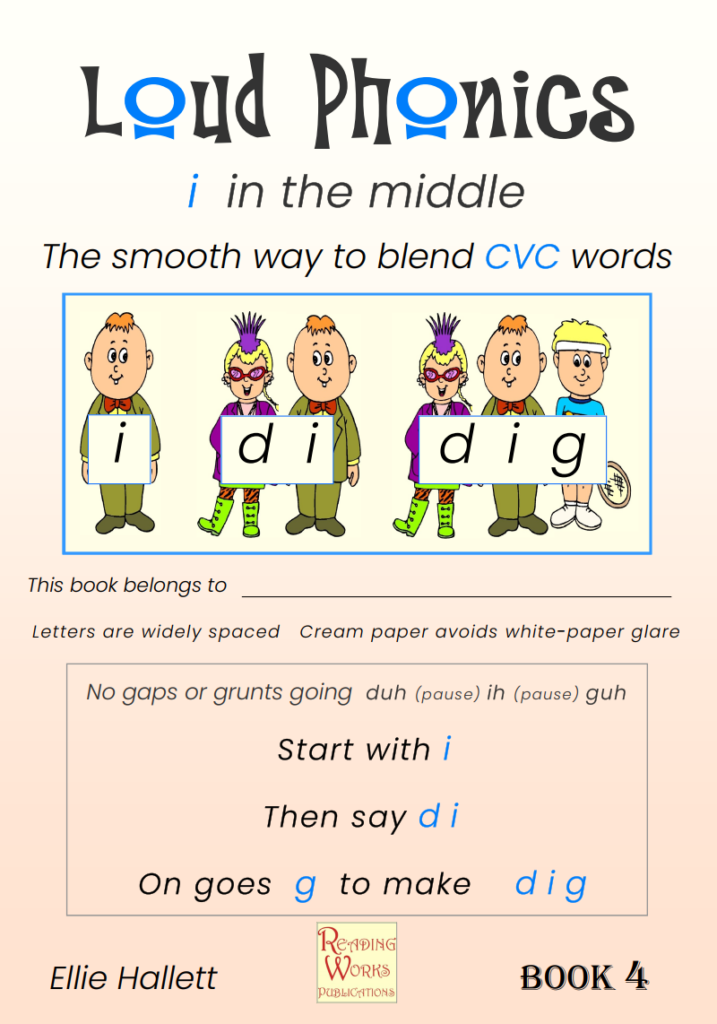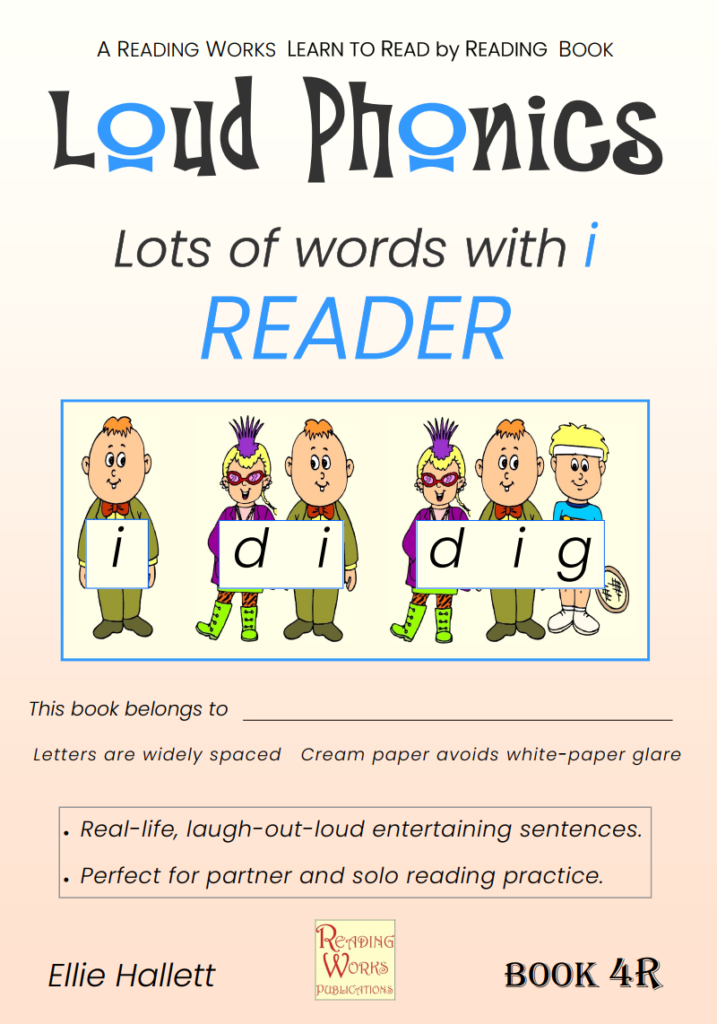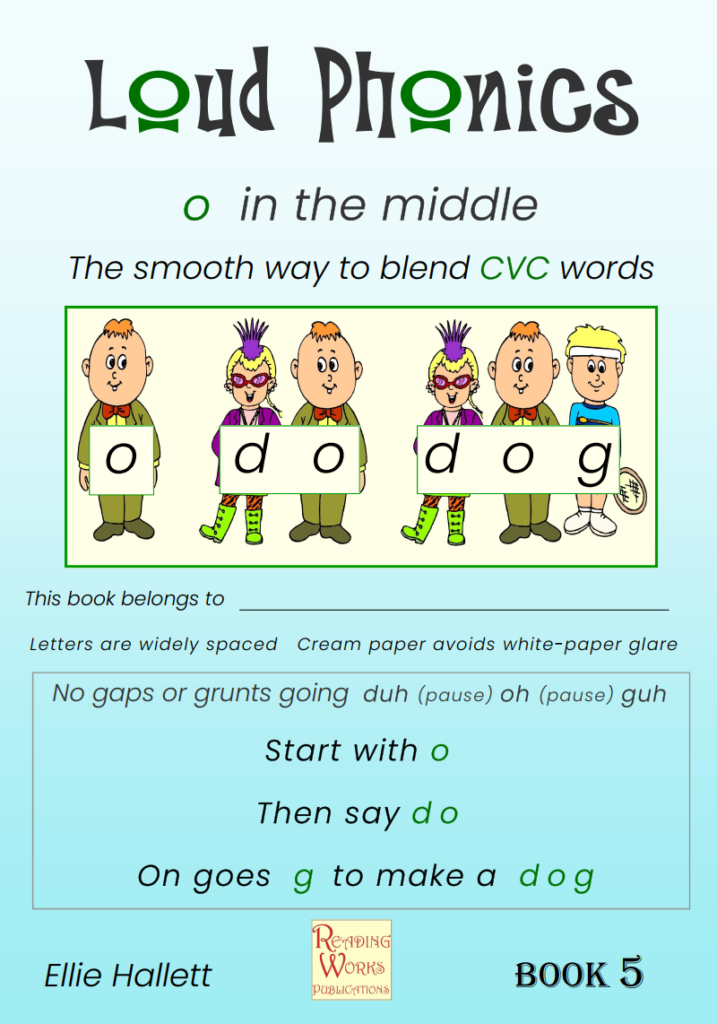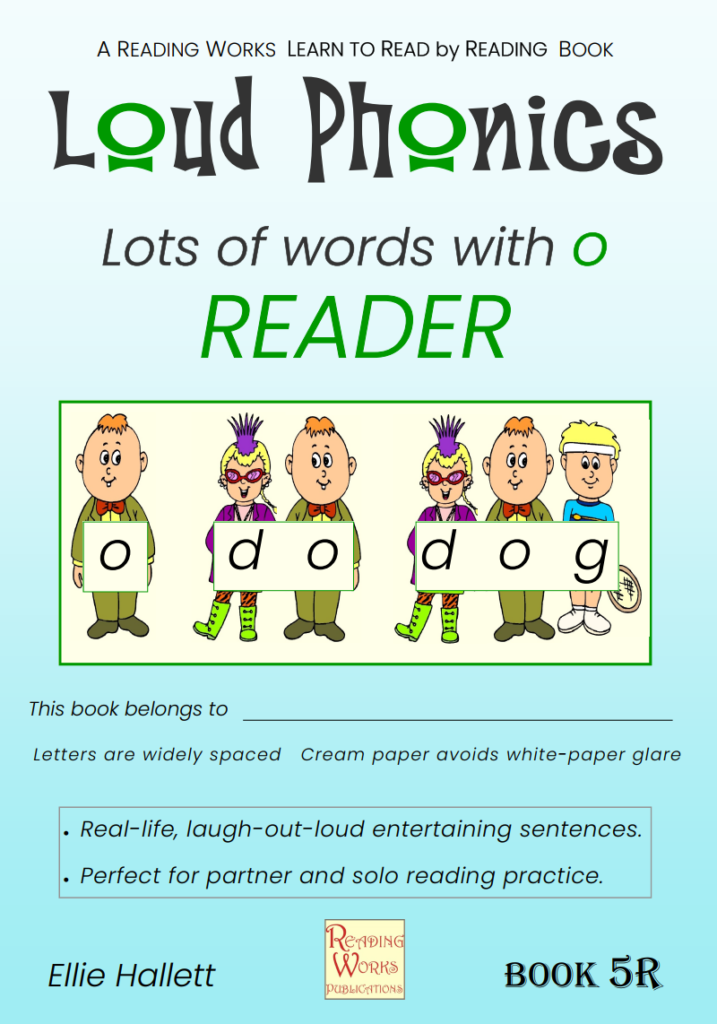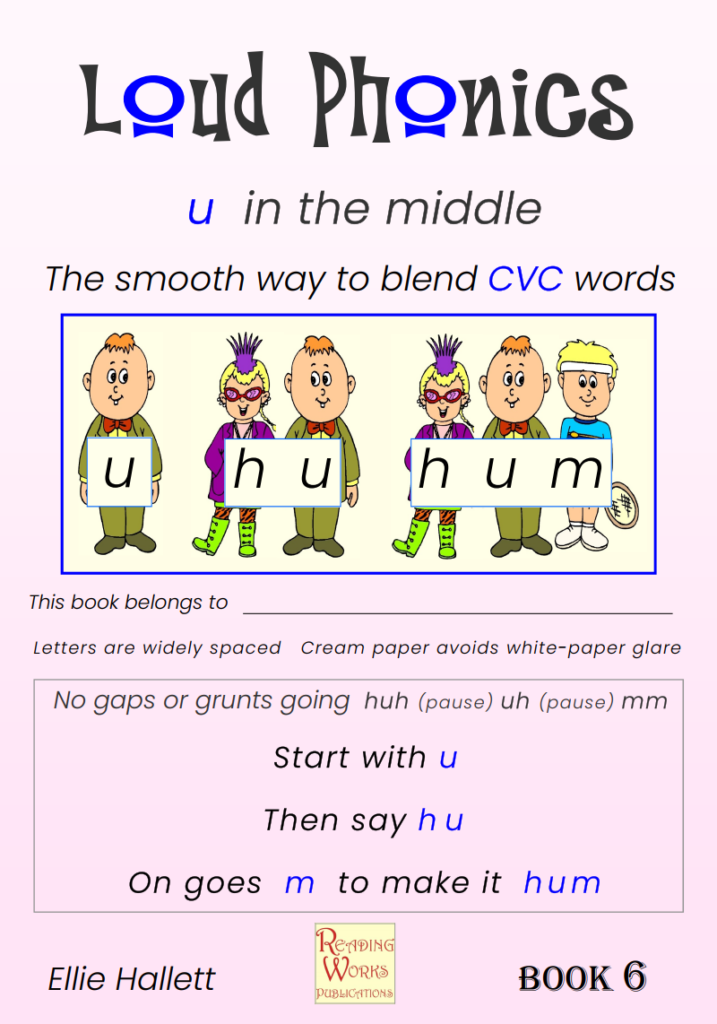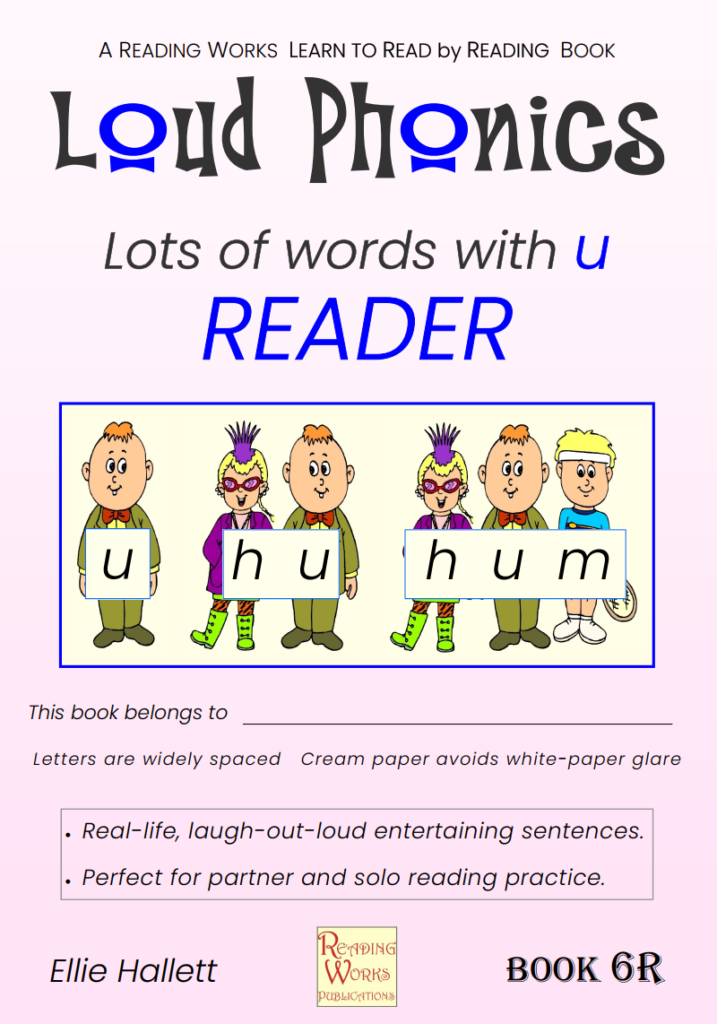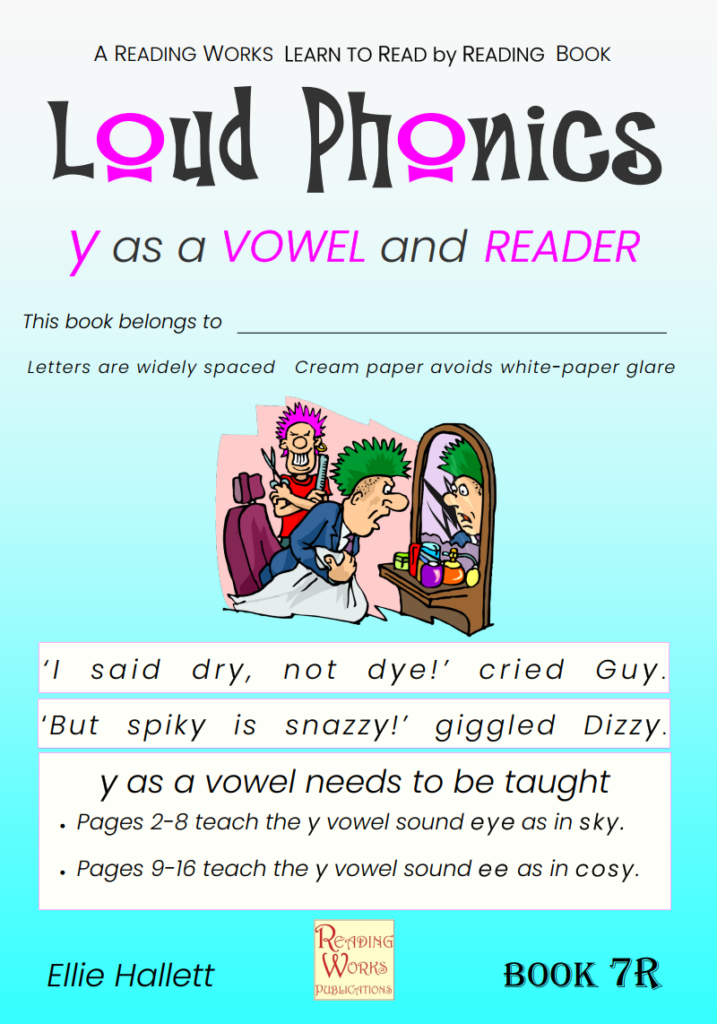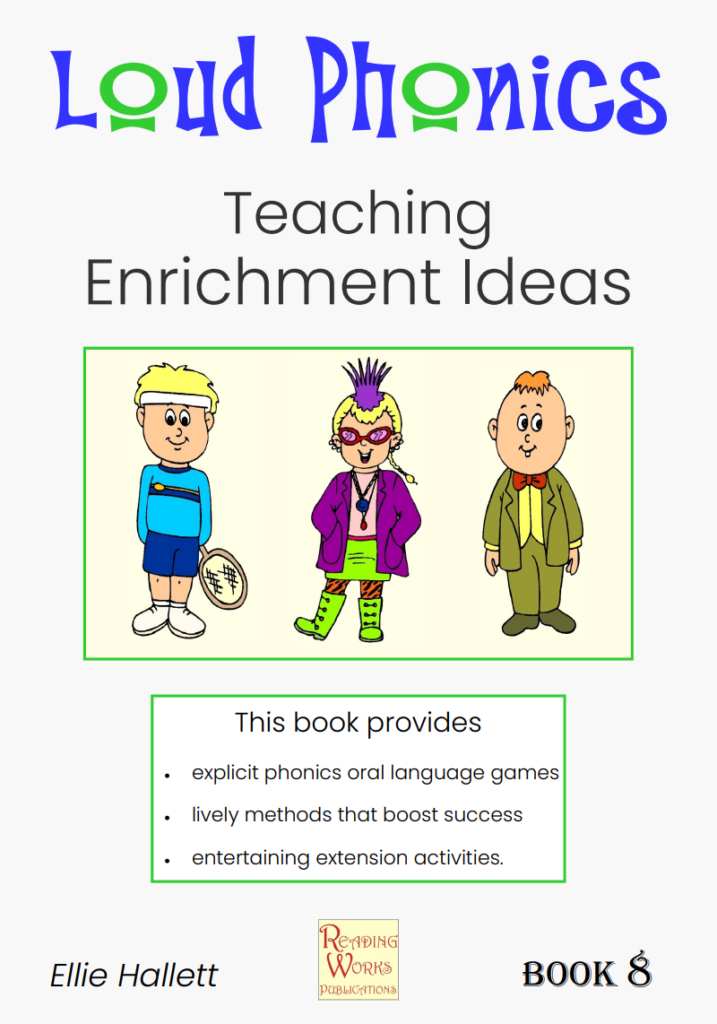Reading needs a clear understanding of phonics.
The Loud Phonics series does just that.
There are 14 A5 size books in the series, comprising:
- Book 1, which teaches the basic sounds and shapes of each letter of the alphabet and how to write them.
- The five vowels – a e i o u in CVC format plus y as a vowel – have a book each.
- Six Readers – one for each ‘middle’ book and the Alphabet book. The vowel ‘y’ has its own in-built reader as Book 7R.
- The Readers advance into blends and digraphs containing the feature letter as found in the words of the sentences. This has the advantage of teaching ea, ie, th, ing etc in situ so that meaning and context are seen, spoken, written and heard simultaneously.
- Repetition is an important part of learning to read. Owning real books adds a ‘this is mine’ comfort for children. Each re-visit, alone or with a partner, adds reading expertise, togetherness and confidence for all abilities. The freedom to go through the books, do the simultaneous writing, reading and thinking at their own pace is another advantage of this series. Partners will usually find someone at their level to work with and share ideas. Loud Phonics was written with these features in mind.
- The Teaching Enrichment Ideas (Book 8) has whole-class learning activities and games to reinforce other aspects of reading, such as the stresses of certain syllables, the mouth shapes needed for speech clarity, and coming in on cue to promote listening. The Breathing of Reading, the importance of having a direct line of sight to the front and to the teacher, plus impromptu oral language suggestions are some of the added extras for teachers.
- The pictures and humour will draw children and the teacher back to read and talk about the books again and again, especially as each picture will probably promote a lively impromptu conversation.
The letter ‘y’ is crucial in English literacy for children because it serves as both a consonant and a vowel, making it versatile and essential for understanding spelling patterns and pronunciation.
When ‘y’ acts as a vowel, it often represents the sounds /iː/ (as in “cozy”) or /aɪ/ sound, as in “my” or “sky”, or /ɪ/ sound as in “gym”. It is an important example to help children grasp how words can vary in sound and spelling. This dual role aids in decoding unfamiliar words and reinforces phonics skills.
Mastery of ‘y’ supports reading fluency and writing accuracy, making it a key component in early literacy development.
This book has its own READER built-in.
This teaching resource offers a range of ideas, information, methods, games, and activities designed to enhance the learning potential of each book in the CVC Middles series.
By using this system, students will hear, say, and see how CVC words blend together in a smooth, left-to-right sequence.
This approach makes decoding words and syllables a more reliable and logical process for beginner readers.
- Explicit phonics and language games
- Lively methods that boost success
- Entertaining extension activities
One copy is included free with each order.
If you want several sets for your class,
please contact us
for a bulk price discount.
More information
Books 1 and 1R introduce every letter of the alphabet in detail, with clear examples and a touch of humor. Writing practice, along with exercises for pronouncing the letters and sounds, reinforces the learning through a workbook format.
Each vowel is featured in its own pair of books, along with a teacher’s guide that offers ideas for every age group and ability level.
The first book in each pair covers the basic sounds of English, while the second book (the Reader) provides sentences to improve fluency, comprehension, and understanding. The vowel “y” (Book 7R) receives special attention, with its own built-in reader.
Series Background
Loud Phonics books are crafted for explicit instruction in classrooms, home-school environments, private and commercial tutoring, independent study, and for learners of English as an Additional Language (EAL). They are perfect for anyone seeking to unravel the quirks and complexities of the English language.
Rooted in Vygotsky’s teacher-as-expert philosophy, the series focuses on “phonics,” a term derived from sound—seen in words like “telephone,” “microphone,” and “xylophone.” The Loud Phonics series engages beginner readers by teaching the relationship between phonemes and graphemes, emphasising the sounds of spoken language.
The series integrates a variety of learning elements, including phoneme-grapheme accuracy, oral language, speech clarity, reading fluency, creative thinking, comprehension, word knowledge, listening skills, vocabulary development, handwriting techniques, general knowledge, and memory enhancement.
Written to be thorough and enjoyable, these books foster success and engagement for learners of all ages and abilities. The carefully selected images instantly captivate, sparking discussion, expanding knowledge, and encouraging readers to revisit the books again and again.
Why the Loud Phonics books were written
This very different approach to CVC words has been created to solve two problems many children and EAL students have when sounding out words. This series was prompted by a teacher telling me that many children in her class had difficulty hearing how the individual sounds ‘d’ ‘o’ ‘g’ turned into ‘dog’.
- The first problem: In the word dog, for instance, the sounding out process (even when the correct short o is pronounced correctly), is usually said duh – o – guh, with a short gap of silence between each phoneme (letter sound). These gaps of silence prevent the smooth glide of natural speech that is needed when blending sounds into a recognisable word. But for many children, these gaps create a difficulty. How can “duh – o – guh” turn into dog when it sounds completely different?
- The second problem is that even when these silences are removed, it is physically hard to vocally blend “duh” “o” “guh” smoothly enough to actually sound like the recognisable word. The uh keeps getting in the way.
And so a problem that shouldn’t be a problem starts to embed itself in the mind that sounding out words doesn’t make sense.
The solution – start in the middle!
By beginning with the medial “o” in our example, dog, it is easy to start with the short “o”, then say and hear the joined-up blend of “d” and “o” into “do” (short o), and then add the final sound “g” onto the “do” to make the fully blended “dog”. No gaps of silence; no unnecessary voiced “uh” grunts.
Building other words in the “dog” group can be a voyage of discovery by the children who will more easily see, read and hear other words beginning with a different initial consonant but with the same VC ending as in hog, bog, cog, jog, log.
There are six Loud Phonics books with the vowel in the middle (a, e, i, o, u, and y as a vowel) also shows how the same CV beginning letters can have a final C consonant, as in dog, dot, dob, don, Don, to form words of different meanings.
Meaning is added when the teacher models sentences using these words, vocabulary is extended and creative thinking and oral language are stirred into life.
Each CVC book is accompanied by a READER which extends comprehension while reinforcing the vowel sound. Word building and vocabulary are also explored. The READERS provide an excellent platform for explicit teaching while the student’s learning journey can be monitored and managed individually or in groups.
The benefit of the pictures
The picture pages help lock in meaning and memorisation via visualisation, by having a mental image of the picture and its word. This avoids children depending on the pictures only to read the words. The sounding-out pages should be just that, without any picture prompts.
After talking about each word and its meaning, the reading focus needs to be on the sounding-out page, which in turn leads to instant word recognition.
After hearing the teacher’s impromptu sentences incorporating a selection of reading words, many children will be ready to make up their own oral sentences to say out loud to a partner, group or the class, which in turn spurs everyone else to make up sentences.
These sentences are the foundation for creative thinking, the mental manipulation and recalling of words, their spelling, and the drafting of sentences in the mind as a preparation for writing.

